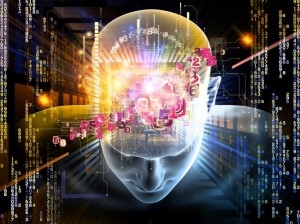Text under study: Toward a Theory of Architecture Machines, Nicolas Negroponte
Will our profession be still needed in the era of technological development and the 3rd industrial revolution? Can human work be totally replaced by machines? Who would be responsible for machines outputs if they take control of designing the new world?
Nicolas Negroponte presents the idea of architecture machines which would be able not only to follow designer’s step-by-step instructions, but also to learn about architecture and perhaps even learn about learning about architecture. Architecture machine would be a complex organism consisting of five main pieces:
- A heuristic mechanism which streamlines the process of finding optimsal solutions, based on comparing various situations
- A rote apparatus storing the event and associating it with the response, useful when similar situation is encountered in the future
- A conditioning device – repetitious responses become habits, so that a machine predefined responses
- A reward selector – a designer observing and evaluating the responses from machine should exhibit his response to direct machine towards successful outcome
- A forgetting convenience- the ability of forgetting when obsolescence occurs
To achieve a design solution three properties are required: an event (how we perceive the situation with our senses), a manifestation (measuring the event with appreciate parameters) and a representation which jointly form the interface.
According to Negrodonte’s work, architecture machine would be self-improving and adaptable. It could exceed a human potential in many fields. Nowadays, the architects can’t handle particularly complex problems and sometimes they also ignore small scale problems. In light of this, a machine is able to work 24 hours per day, having almost unlimited memory and processing capabilities.
Negroponte presents an ideal evolutionary system, where the entire designing body consists of a group of interconnected mechanisms. At the top of this hierarchy is a parent machine with powerful processor and extensive memory. The reason to have a parent machine is to conquer a large burst of computational power and stored information. A communication between parent machine, designer and other architecture machines is crucial to achieve the evolutionary system.
All articles involved in the debate have relationship with digital logics and also some connection between each other. Toward a Theory of Architecture Machines is similar to the idea of data in/ data out where a parent machine is a perfect example of base for network of information. The evolutionary system shows the associativity of part to whole. A heuristic mechanism and a rote apparatus are strongly connected with typological transformations.
I noticed a connection between Negroponte’s article and a fragment from the book On growth and form. Aspirations of finding a basic roles and general trues of the world by using mathematics remind me again of the architecture machine constructed to obtain the huge base of information and able to use them in the future to speed up the process of designing.
I have no doubt the machine can become a full-fledged artificial intelligence. We can teach it elasticity, adaptability, diversity and ingenuity. It even seems possible to program it to imitate human senses. One thing, which in my opinion we are not able to teach the machine are personal emotions.
Would any machine be able to design a building such as Bruder Klaus Field Chapel designed by Peter Zumthor? The building which moves our hearts and souls when we enter its interior? The building which interacts with every small element of our mind and body?
Is it possible to write a script of creating a space which induces human emotion? In my opinion no machine can be comparable with human mind abilities: sensitivity and emotions. I believe that advanced technology can be a great tool, but not a replacement for human.
This article inspired me to do a further research in the areas where the machine is not able to replace a human being: sensitivity, emotions, compassion and other soft skills. I would like to prove taht is not possible to design a mashine totally identifying with the human mind. It would be a good opportunity for me to explain why life in a world ruled by machines could turn into a nightmare.


